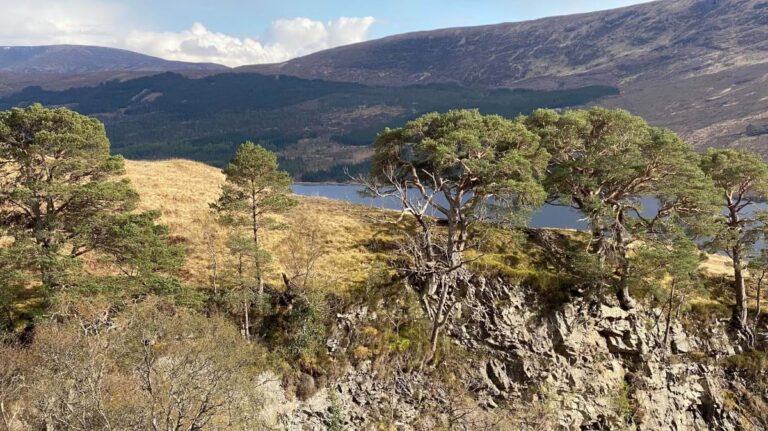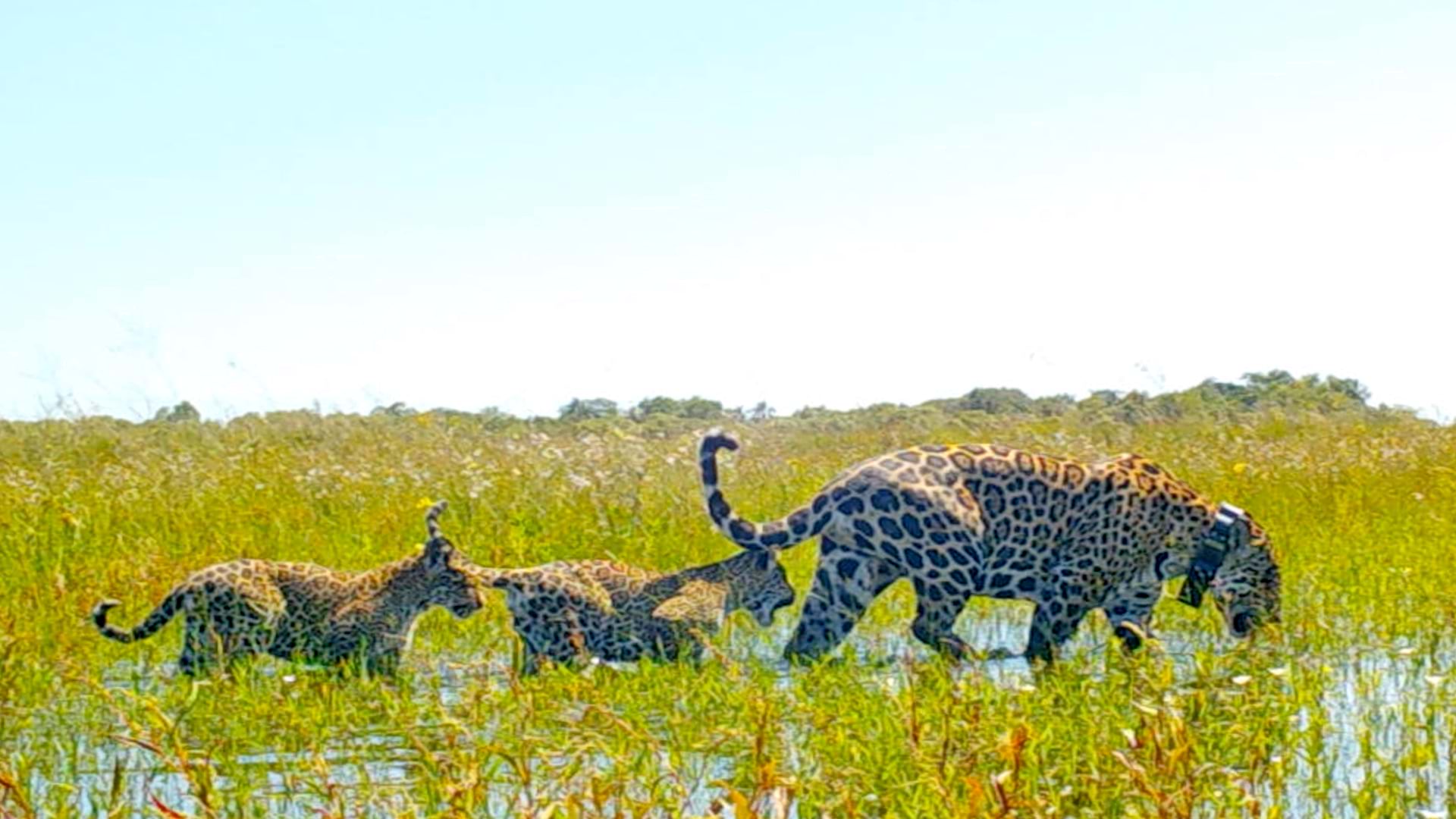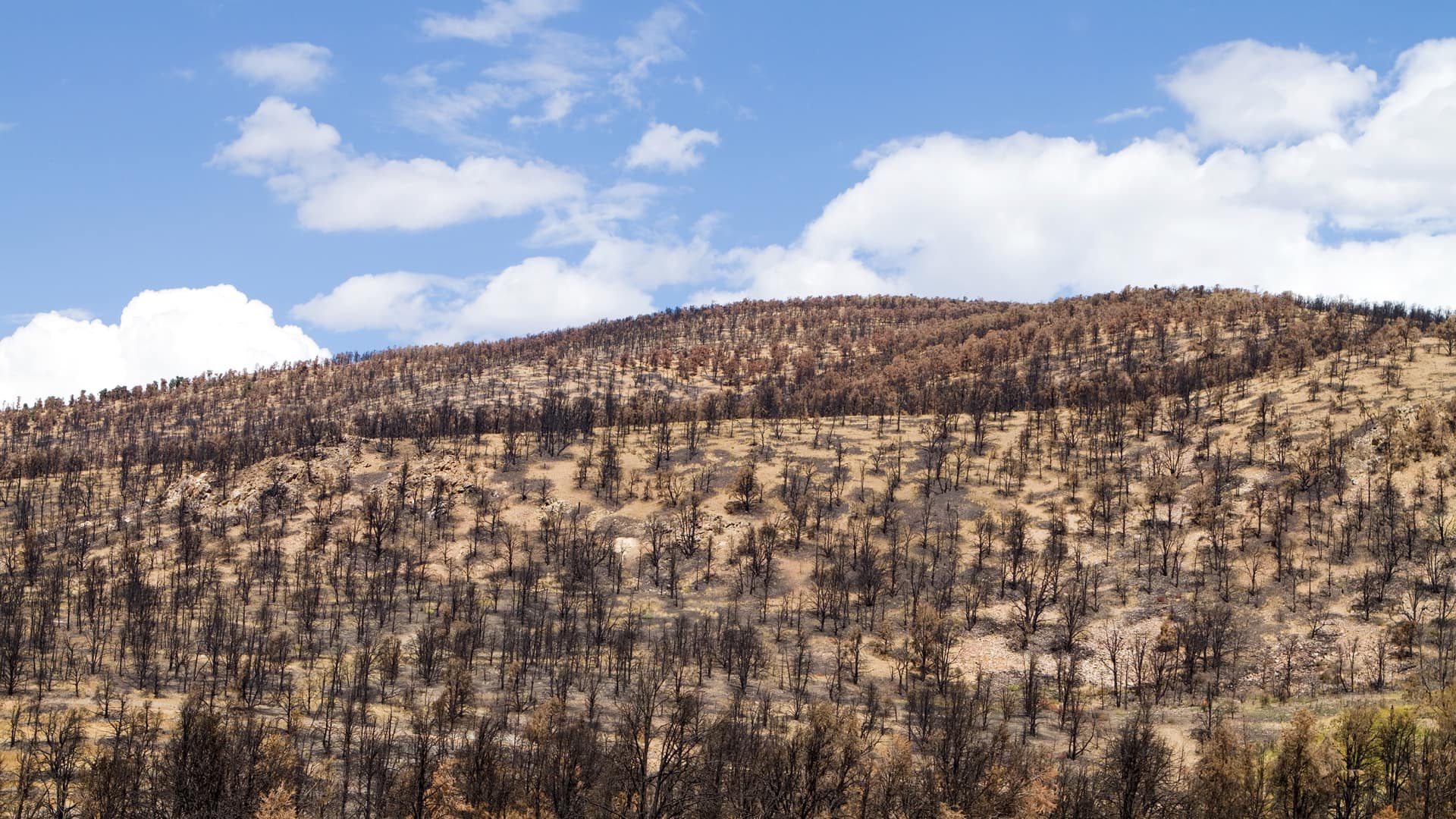
When you come up with an idea to restore an area, it often starts as a fuzzy concept in your mind. The ability to map it helps bring it all together.
February 27, 2024
A lone Scots pine may soon have neighbors. (Photo courtesy of Trees for Life)
Trees for Life, a Scottish rewilding charity, joined forces with Rewilding Europe to create the Affric Highlands initiative. Situated in the heart of the Scottish Highlands and spanning over 200,000 hectares, this pioneering rewilding of the landscape places local people at its core. Over the course of 30 years, Affric Highlands will bring together communities, businesses, and landowners in the region with the shared objective of restoring nature, fostering a resilient local economy, and enriching people’s lives.
To realize this ambitious vision, it is imperative for the organization to gain a comprehensive understanding of the remaining fragments of native habitat. Records of the region’s environmental history are scarce. But there are a few maps that have survived, including a famous survey conducted by Scottish military engineer William Roy in the 1740s (see sidebar). These maps of the past have been digitized to help inform Trees for Life’s ecologists who carry handheld devices into the forest, using geographic information system (GIS) apps to record findings and consult the historical maps.
“GIS and maps are really important because they ground us,” said Alan McDonnell, the head of nature restoration at Trees For Life, who notes how maps help consider the dimensions of the rewilding effort. “We like to see what it was to gauge how big it could be, what it could look like, and how it could sit in the landscape.”
Rewilding has gained prominence as a means to combat climate change and counteract the collapse of nature. It requires a strong interdisciplinary knowledge of the web of species that make up a healthy ecosystem.
“Almost anywhere you go in Scotland, you’ll see at least some trees,” McDonnell said. “But often it could be a richer place ecologically.”
With GIS technology, Trees for Life blends technical skills with the workflows and skills of natural history and field ecology specialists. These professionals use GIS to capture data, analyze ecosystem values, and visualize interconnections among different species.

In the rewilding effort, Trees for Life focuses on creating places where there’s room for open-ground species, semi-woodland species, and many others in between. Ecologists use old maps to guide work in the field, hoping to find genetic evidence of forests that developed after ice left Scotland more than 13,000 years ago.
“It depends how degraded the woodland remnant is,” McDonnell said. “But some flora and fauna will have that continuity. . . . The living building blocks of habitat will still be there.”
Wherever pockets of original forest are found, there is scope to allow the trees to set seed and naturally regenerate and rejuvenate the woodland. Sometimes, seeds are collected and propagated so that the seedlings can be replanted according to carefully designed—and mapped—forest plans.

When you come up with an idea to restore an area, it often starts as a fuzzy concept in your mind. The ability to map it helps bring it all together.
GIS helps answer questions about how people in the past used the Scottish Highlands. In the 18th and 19thcenturies, they felled oak and pine trees to build ships and fuel furnaces for making iron during the Industrial Revolution.
Only 84 areas are recognized as Caledonian pinewoods in the government’s pinewood inventory. Trees for Life has visited the majority of these areas and conducted extensive surveys of their health and condition. The next step will be to consider other ancient pinewoods that are not on the list.
“We’re making the argument to government—and society—that Caledonian pinewoods would be much more of a significant component of today’s landscape if we would let nature have its way,” McDonnell said.
Much of Scotland’s native flora has been harmed by sheep and deer, whose browsing consumes tree seedlings, which leads to a sparse mature forest without next-generation trees.
Trees for Life has successfully installed deer fences that allow the seedlings to grow where they haven’t been free to grow for centuries. In places with older trees, a deer fence can be all that’s needed for the trees to naturally expand the forest.
To imagine what the Affric Highlands Partnership can accomplish in terms of biodiversity restoration, the team looks to an example set by the healthy pinewoods of Norway.
“If you travel just 200 miles east of here to southwest Norway—the same latitude—you can hardly walk in a pinewood without standing on twinflower, which is a rare species in Scotland,” McDonnell said. “It can feel like there’s miles of the stuff there, along with a diversity of mammals.”
Trees for Life has had success in returning mammals that have gone locally extinct or have been in serious decline in Scotland, including beavers and red squirrels.
“Red squirrels were captured from the east where they thrive, and taken to north and west Scotland where they petered out 60 years ago,” McDonnell said. “And lo and behold, they were naturally feeding within days, and in three months there were young squirrels.”
McDonnell likes to show people on maps how the squirrel populations have grown bigger and begun moving around. He has watched even the most suspicious rewilding skeptics light up when he talks about these charismatic creatures.
The stretch goal of Trees for Life is to return the Eurasian lynx to Scotland. “That’s a very serious social proposition, because we don’t have a predator bigger than an otter now,” McDonnell said.
To make the case for lynx reintroduction, Trees for Life has compiled maps of the habitat it likes and the lynx’s impacts on the environment. “The conversation starts with showing where the lynx might go and where it almost certainly wouldn’t,” McDonnell said. “The ability to communicate visually is really valuable. We can’t predict exactly what the lynx would do here—it’s a wild animal after all—but we can illustrate the range of scenarios based on knowledge of similar landscapes and situations.”
McDonnell has seen restoration succeed. That helps fuel his passion. Thirty years ago, Trees for Life replanted native trees in an area of open ground in Glen Affric. Colleagues he calls “tree wizards” went high into the crags of mountains to harvest seeds in places deer couldn’t reach, to return rare willow species. The word wizard applies in his mind for the ways they keep small remand populations of rare species going with their technical skill and tender loving care. With persistence and vision, a forest slowly took hold.
The land has changed, and habitat has been created with the return of insects, fungi, plants, and mammals. The habitat has even led to the return of black grouse—an endangered species in Scotland.
“You get this mosaic of habitats,” McDonnell said. “Each step feels quite small, but they are all steps towards bringing richness back into the landscape.”
The same GIS maps that guide rewilding efforts also support Trees for Life in communicating the benefits of restoring the Affric Highlands—especially to inspire the next generation.
“I don’t know about you, but I remember being young and having lots of idealistic ideas about how things should happen,” McDonnell said. “Just lots of shouting at the wind and saying, ‘Why don’t the people in charge sort this out?’ And of course, that never really comes about. You eventually realize you’ve got to make that change yourself.”
Learn more about how GIS is used to transform natural resource management.



